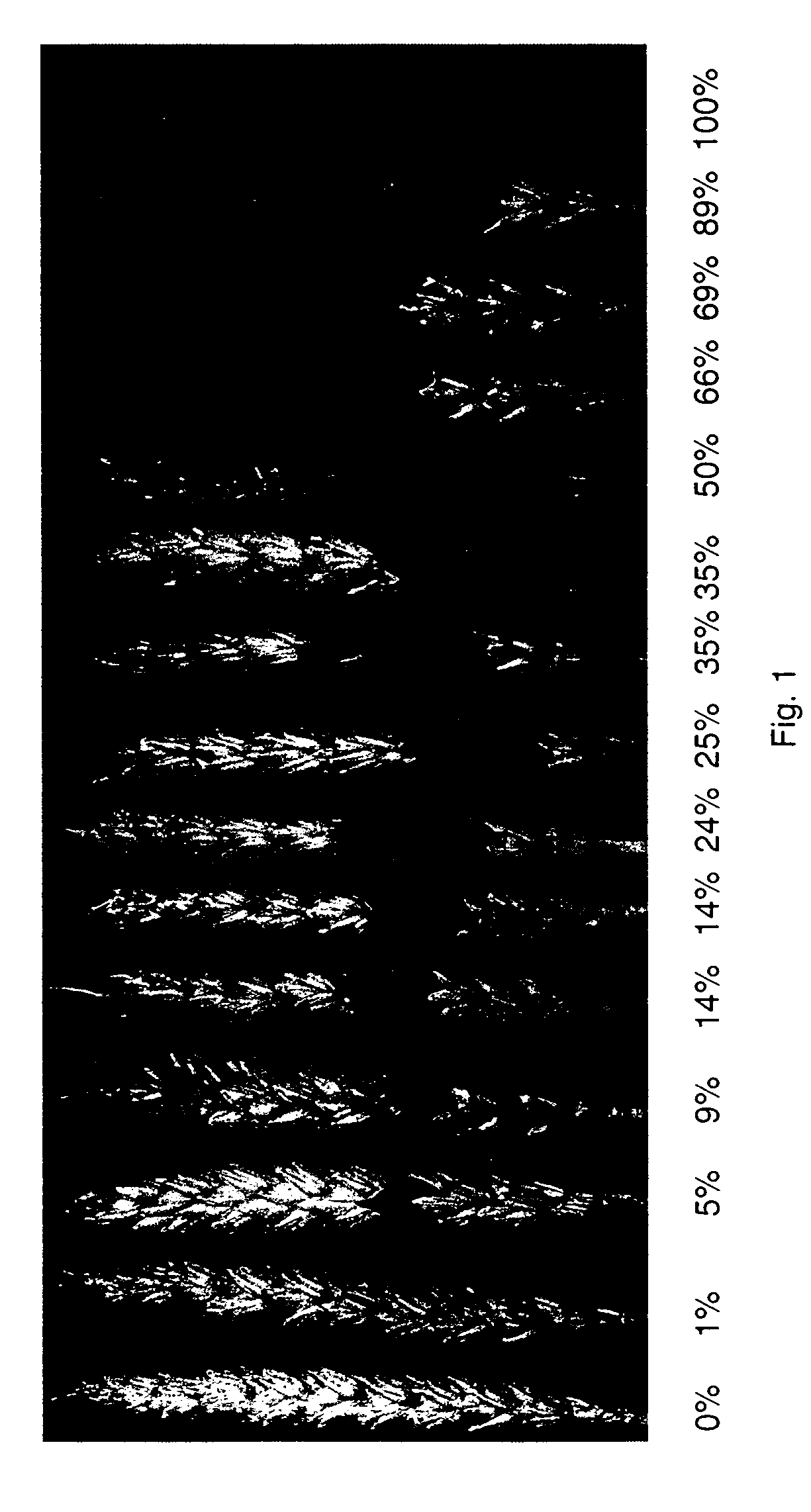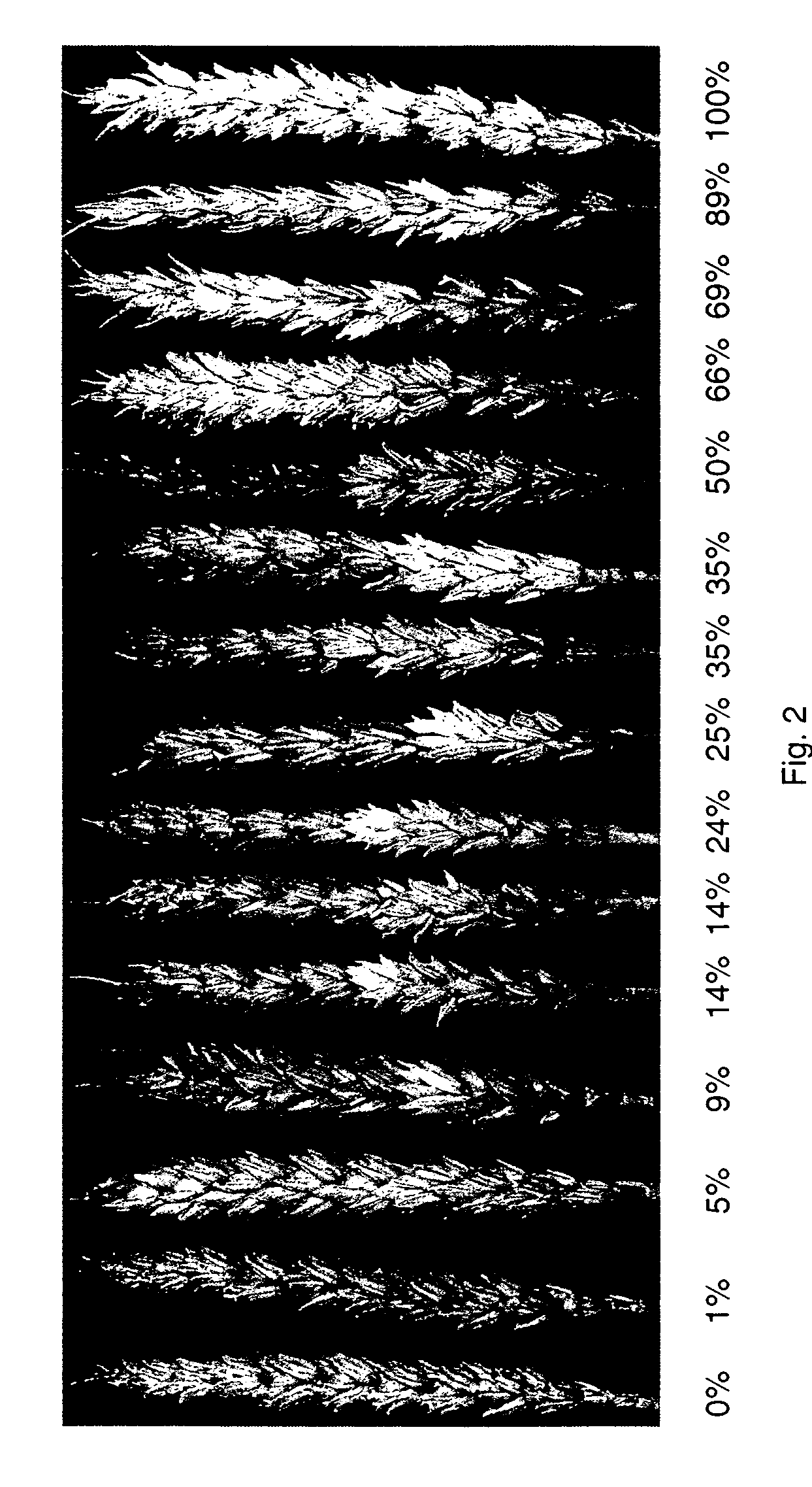Breeding of fusarium resistant tetraploid durum wheat
a technology of fusarium and tetraploid wheat, which is applied in the field of breeding of fusarium resistant tetraploid wheat, can solve the problems of reducing yield, not blight, and serious threat to durum wh
- Summary
- Abstract
- Description
- Claims
- Application Information
AI Technical Summary
Benefits of technology
Problems solved by technology
Method used
Image
Examples
example i
Preparation of FHB Resistant Tetraploid Wheat
Summary
[0038]Tetraploid wheat that was not resistant to Fusarium was crossed with Fusarium resistant hexaploid wheat. The progeny were then backcrossed with tetraploid wheat to produce backcrossed F1 (BC1F1) progeny. The backcrossed F1 progeny were then selfed to produce backcrossed progeny (BC1F2) that include the Fusarium resistant tetraploid wheat.
Materials
[0039]Sceptre and Medora durum wheat were developed by the Department of Plant Science and Plant Pathology at the University of Saskatchewan and were released on 5 Jul. 1985 and May, 1982, respectively. Sceptre and Medora exhibit high yield and quality but do not exhibit Fusarium resistance. A complete description of Sceptre has been published (Knott, Can. J. Plant Sci., 66:407 (1986)). A complete description of Medora has also been published (Leisle, Can. J. Plant Sci., 66:999 (1986)).
[0040]Ben durum wheat was developed by the North Dakota Agricultural Experiment Station in cooperat...
PUM
 Login to View More
Login to View More Abstract
Description
Claims
Application Information
 Login to View More
Login to View More - R&D
- Intellectual Property
- Life Sciences
- Materials
- Tech Scout
- Unparalleled Data Quality
- Higher Quality Content
- 60% Fewer Hallucinations
Browse by: Latest US Patents, China's latest patents, Technical Efficacy Thesaurus, Application Domain, Technology Topic, Popular Technical Reports.
© 2025 PatSnap. All rights reserved.Legal|Privacy policy|Modern Slavery Act Transparency Statement|Sitemap|About US| Contact US: help@patsnap.com


